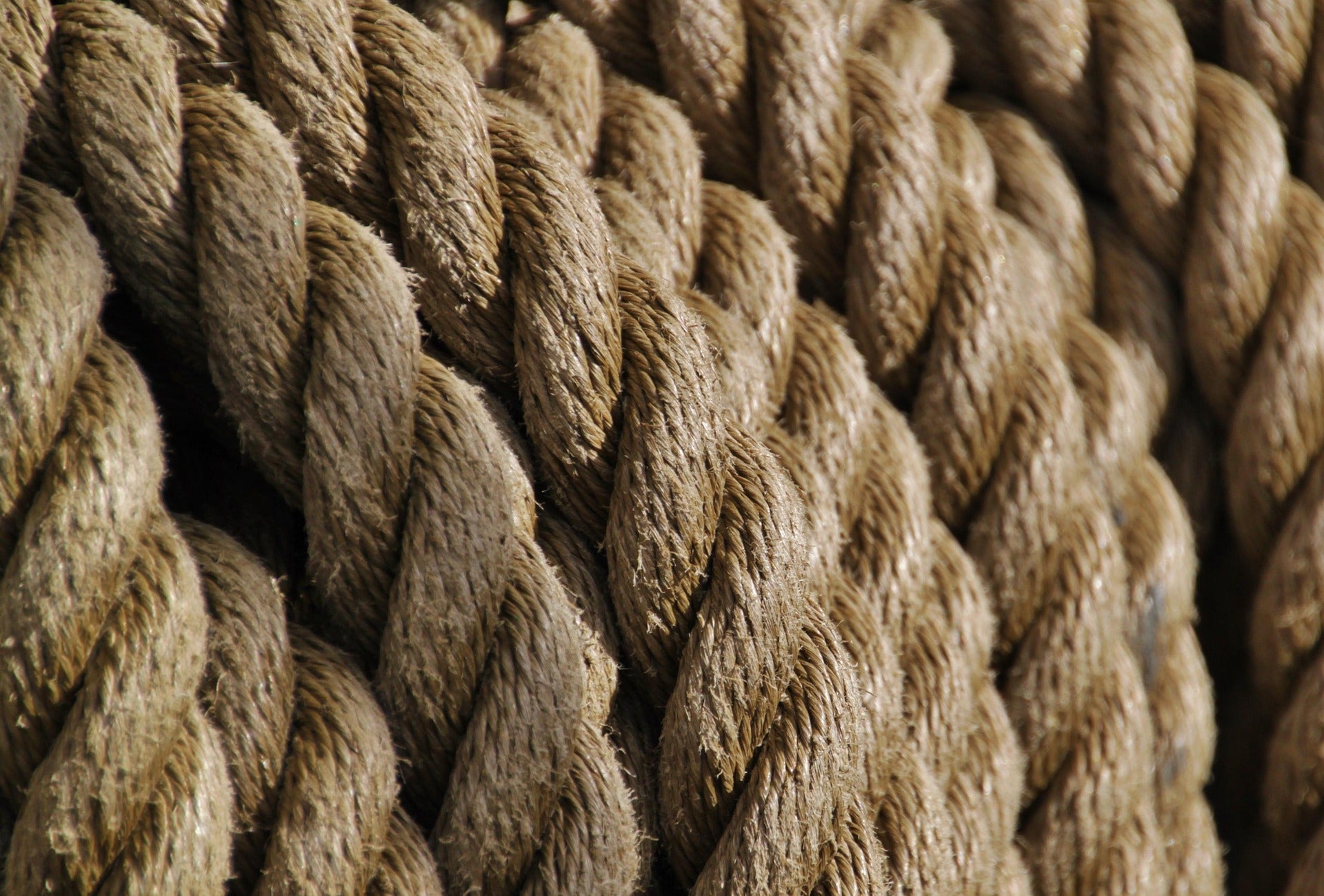
Choosing the Right Rope
A Guide to Materials, Comfort, and Safety
When it comes to rope bondage, the material you choose matters just as much as your technique. Each rope has its own characteristics in terms of texture, flexibility, strength, and aesthetics—all of which affect your experience as a rigger or rope bottom.
Whether you're tying for art, connection, or suspension, understanding the pros and cons of various rope materials can help you make an informed choice.
At The Azure Strand, we specialize in high-quality, conditioned, JBO-free jute rope and natural rope products, chosen for their balance of tradition, beauty, and performance.
In this guide, we'll explore the strengths and limitations of different rope types, from traditional naturals like jute and hemp to common synthetics like nylon and POSH.
Natural Fibre Ropes
Collapsible content
Jute
Pros:
- Traditional material for Japanese rope bondage (shibari/kinbaku)
- Long lifespan if well cared for – quality jute can last years if properly maintained
- Minimal stretch, ideal for precise ties and suspension
- Lightweight with excellent friction and "bite," which helps knots hold securely
- Fast tying and easy handling, especially when well-conditioned
- No strong odor, if produced without JBO
- Beautiful golden hue and natural aesthetic
- Lower risk of friction burns than synthetic materials
Cons:
- Not suitable for water. The fibres will contract and warp when wet
- Can feel stiff or rough when new or untreated, but softens with age
- Requires conditioning and regular care to maintain strength and suppleness
- JBO (jute batching oil) is often used in the manufacture of jute rope. This is a strong-smelling, petroleum-based lubricant that can irritate the skin.
Hemp
Pros:
- Also a traditional material used in shibari
- Very similar benefits to jute – preference often simply comes down to the different feel of these materials in the hand
- Holds friction well and won’t slip easily
- Doesn’t use JBO in production – unlike jute, hemp does not require as much oil for lubrication during batching
- Softens even more than jute with age and use – aged hemp can often be even softer and silkier than jute
Cons:
- Similar downsides to jute, when compared to synthetics
- Also unsuitable for water, due to warping of the natural fibres
- Heavier and more pliable than jute, which can make it feel “floppy” by comparison
- Earthy, barn-like scent which some people find unpleasant – this smell fades over time
Cotton
Pros:
- Very soft and comfortable, often used by beginners or in sensual play
- Readily available and affordable
- Machine washable
Cons:
- High stretch; knots can tighten excessively and become hard to untie
- Not suitable for suspension due to stretchiness and poor load-bearing capacity
- Retains moisture, which can lead to mildew or weakening of fibres
Bamboo
Pros:
- Soft feeling rope, similar to cotton; gentler for intimate ties or for new bottoms
- Hypoallergenic; gentle on the skin and on sensitive areas of the body
- Less likely to cause friction burns than most other fibres
- Like cotton, bamboo is machine washable
Cons:
- Not safe for suspension; has a lower breaking strength than other fibres
- Often has a looser lay, making it more prone to deforming
- Difficult to find good quality bamboo rope
Sisal
Pros:
- Similar to jute, with stiff fibres and good friction
- Very coarse and rough, ideal for those with masochistic tendencies
- Often used in extreme sensation play due to its abrasive texture
- Durable and relatively strong
Cons:
- Extremely scratchy and uncomfortable for most, especially on sensitive skin
- Uncommon in bondage scenes due to its harshness
- Can cause irritation or injury if not used carefully
Coconut/Coir
Pros:
- Even rougher than sisal, providing an intense, painful experience for those
into extreme sensation play - Rarely used but can be found in some forms of "torture ties"
Cons:
- Not suitable for most people due to its extreme discomfort
- Extremely harsh on the skin, can cause abrasions or even injury
- Extremely rare in bondage due to its limited appeal
- Not typically used for suspension or complex ties due to low strength and rough texture
Synthetic Ropes
While many practitioners prefer natural fibres for their organic feel and sustainability, synthetic ropes are also common in the kink world, especially in Western bondage communities.
Some riggers also use synthetic materials for suspension uplines due to their superior tensile strength. Additionally, synthetics are durable and easy to clean, as they can safely get wet and be washed in a machine without concern for damage.
However, synthetic ropes are made of plastic and derived from oil/petroleum, so despite their many advantages, they are not an ecologically-friendly, natural, or sustainable choice.
Collapsible content
Nylon
Pros:
- Extremely strong and durable
- Easy to clean
- Widely available and inexpensive
Cons:
- Very slick, which can cause knots to slip and shift pressure or tighten unexpectedly
- Very stiff, and does not break in like a natural rope will
- Can feel cold or clinical; lacks the organic feel and aesthetic of natural rope
P.O.S.H. (Spun Polyester)
Pros:
- Soft feeling and low-stretch, commonly used for rigging ships
- Lightweight, waterproof, and UV resistant
- Strong, durable, and easy to clean
- Looks similar to natural rope
Cons:
- Often more expensive than other synthetic options
- It is still a synthetic material and can cause "rope burn" more easily than natural rope
Hempex (Spun Polypropylene)
Pros:
- Synthetic rope made to look and feel like hemp
- Stronger and more durable than natural rope
- Low maintenance and easy to clean
Cons:
- Still somewhat more artificial feeling than real hemp
- Doesn't break in or age the same way natural hemp does
Considerations for Suspension
Suspension requires rope that is strong, predictable, and reliable under stress.
While some riggers choose synthetic ropes for their higher tensile strength, well-maintained jute and hemp ropes are also suitable and preferred by many for their performance and aesthetic qualities.
For natural rope to be safe for suspension, it must be regularly inspected, conditioned, and replaced when signs of wear appear.
Synthetic ropes may offer peace of mind for uplines, but they often sacrifice the tactile and visual elements that many practitioners value in their craft.
Final Thoughts
Ultimately, the best rope for bondage depends on your personal style, preferences, and needs.
Jute offers the crisp, traditional look and feel favored in shibari, while hemp provides a softer, earthy alternative. Cotton, silk, and bamboo are great for beginners or for sensual scenes but lack the performance needed for more advanced work.
Synthetics can fill certain roles, especially in suspension, but are less-sustainable petroleum products, and may lack the intimacy and connection of natural fibres. Rougher materials like sisal, manila, or coconut coir are good for special circumstances but are not recommended for typical use.
At The Azure Strand, we honor the tradition of natural rope with beautifully conditioned, JBO-free jute products, prepared with care and attention to detail.
Whether you're a seasoned rigger or just beginning your journey, we invite you to explore the materials that resonate most with your body, your partner, and your practice.
The Azure Strand
Premium Jute Bondage Rope - Knotted Ends
Share
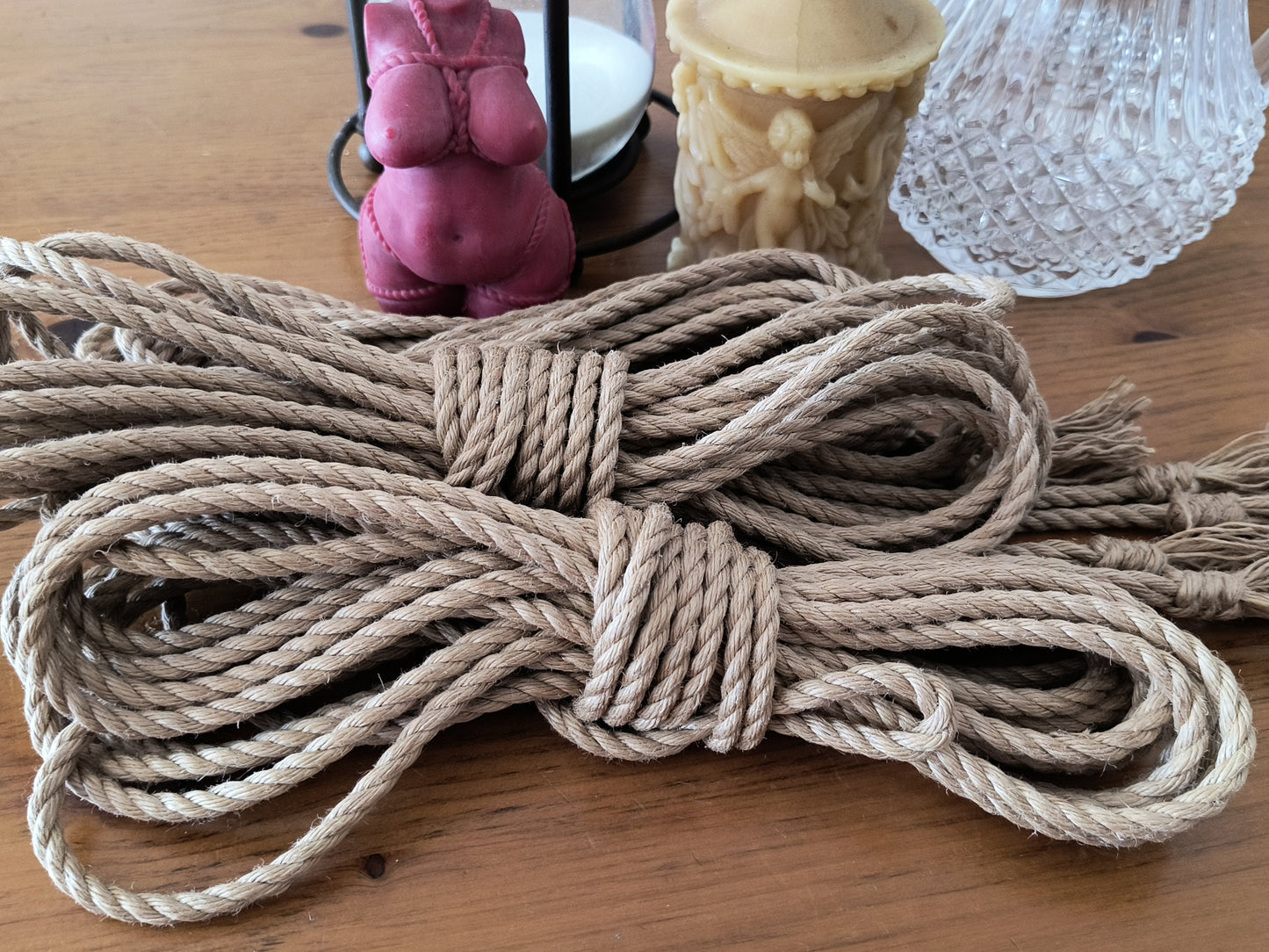
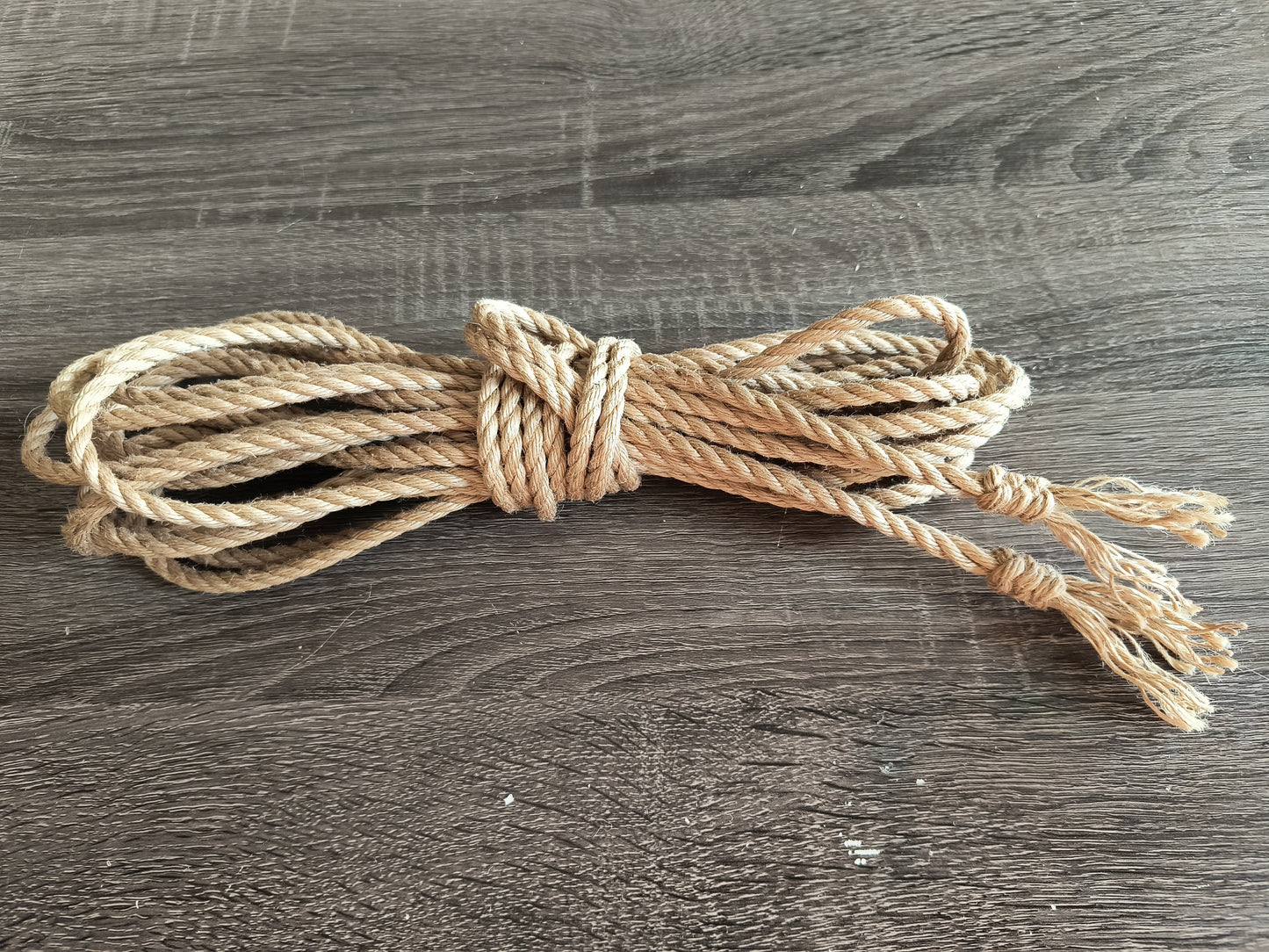
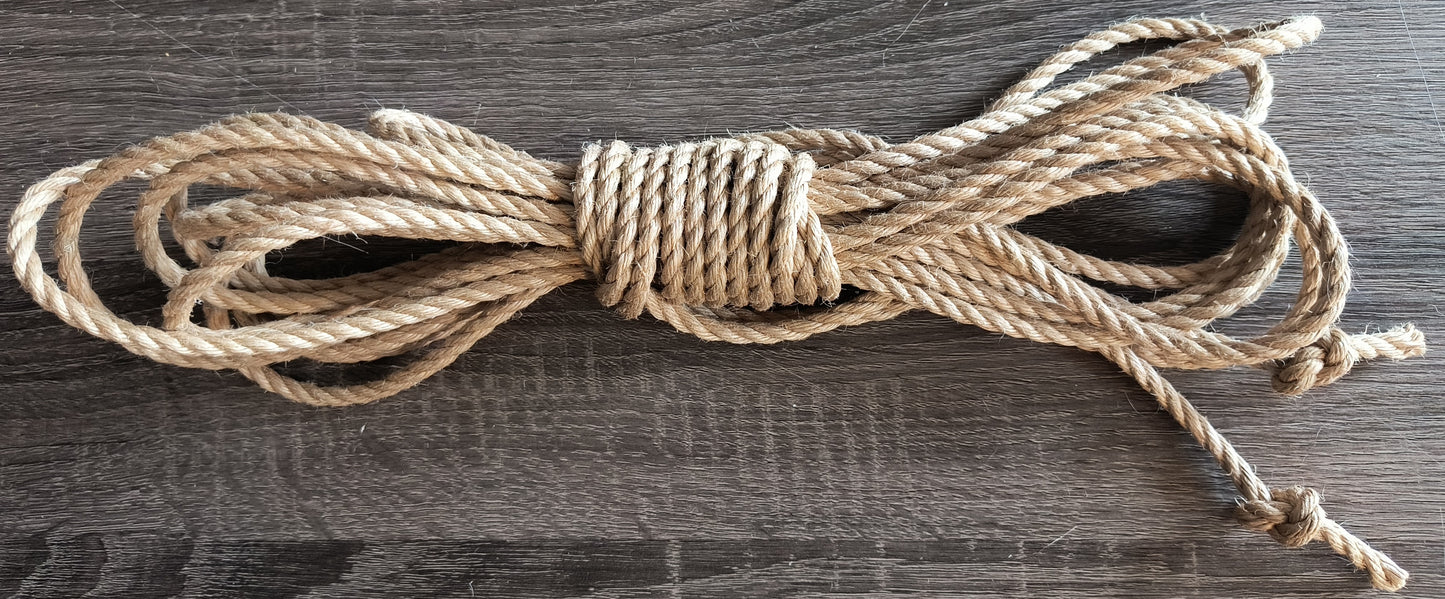
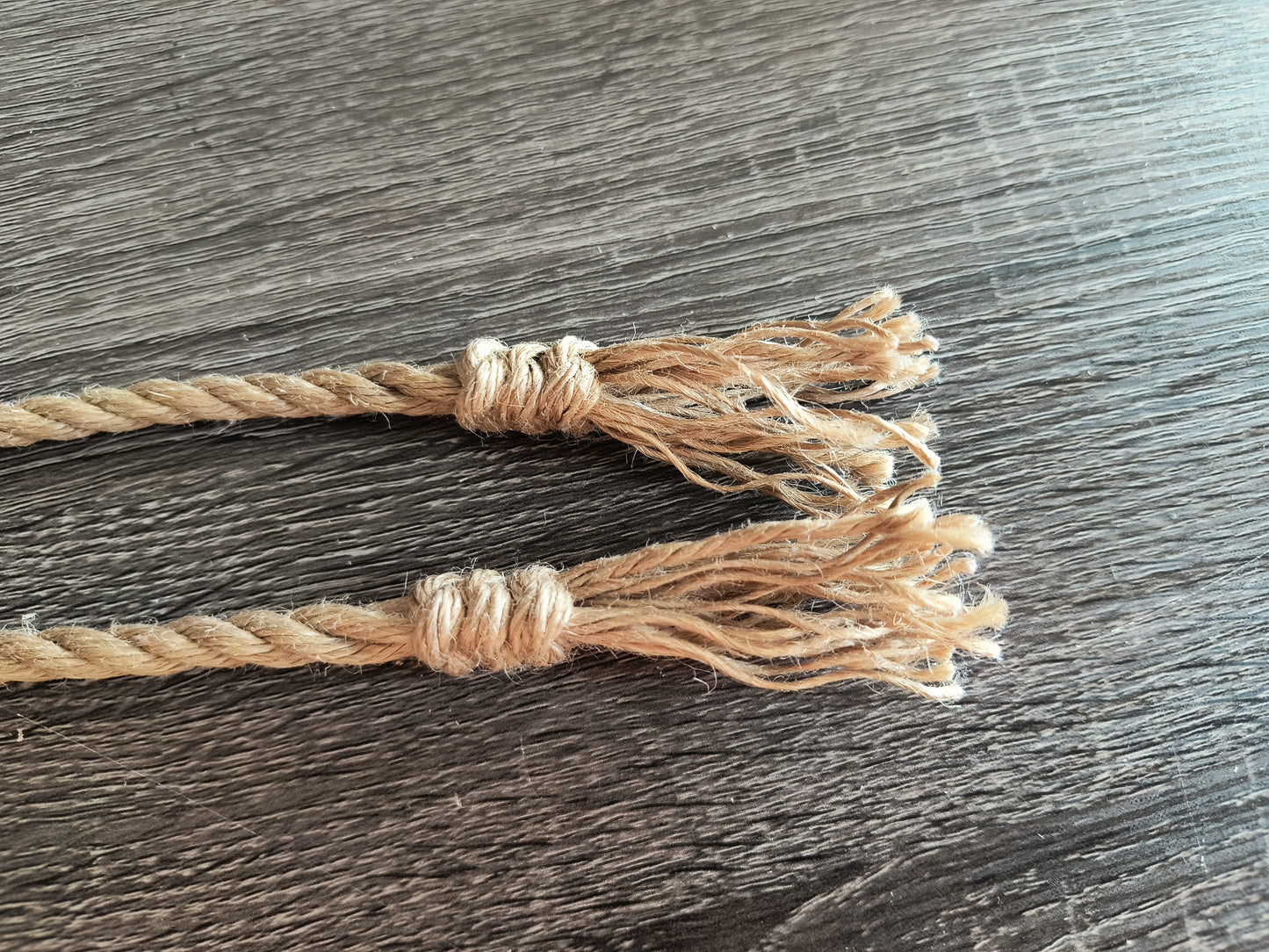
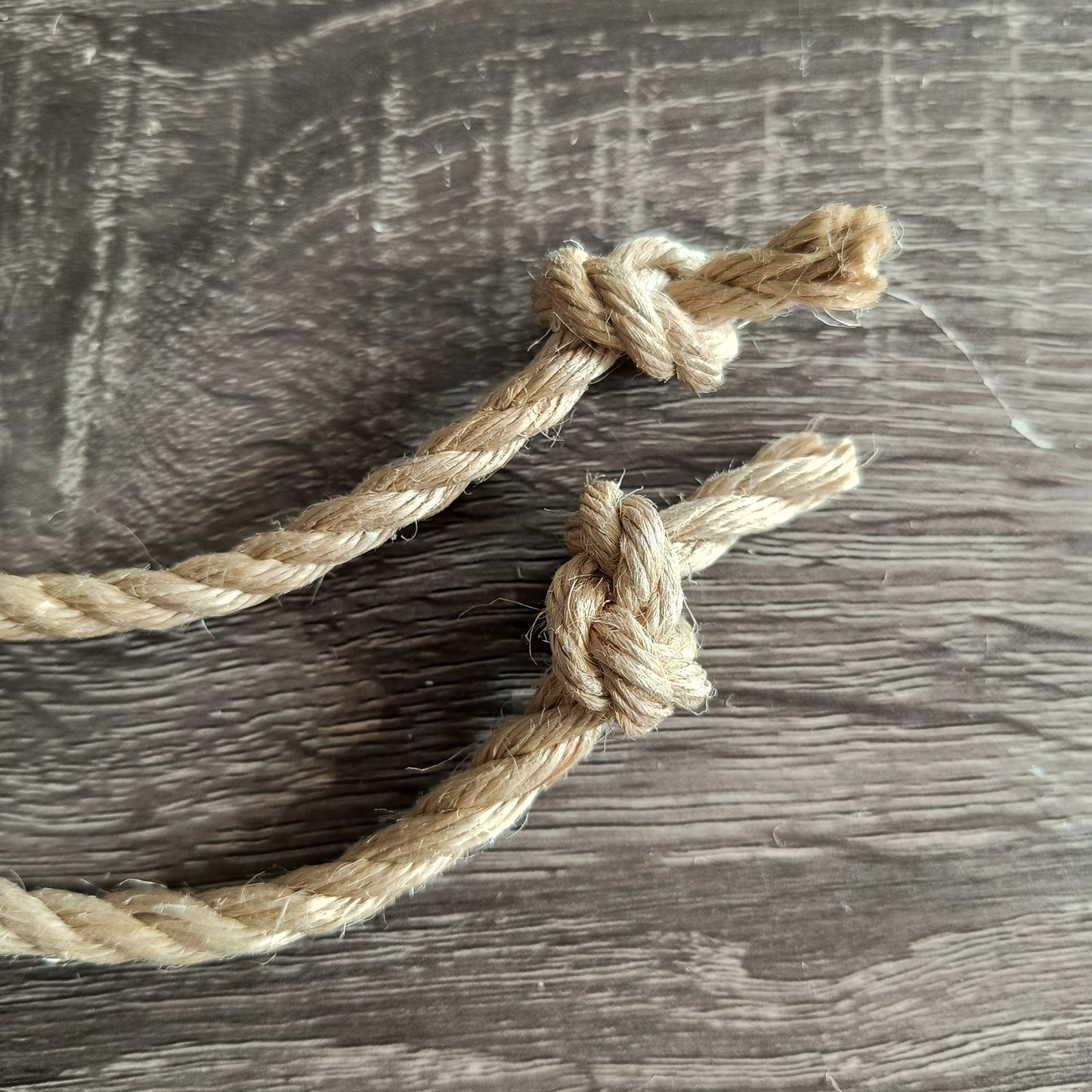
-
Premium Jute Bondage Rope - Whipped Ends
Regular price From $15.99 CADRegular price -
Premium Jute Bondage Rope - Knotted Ends
Regular price From $12.99 CADRegular price -
Raw Jute Rope
Regular price $1.00 CADRegular price -
Rope Butter
Regular price $16.49 CADRegular price





